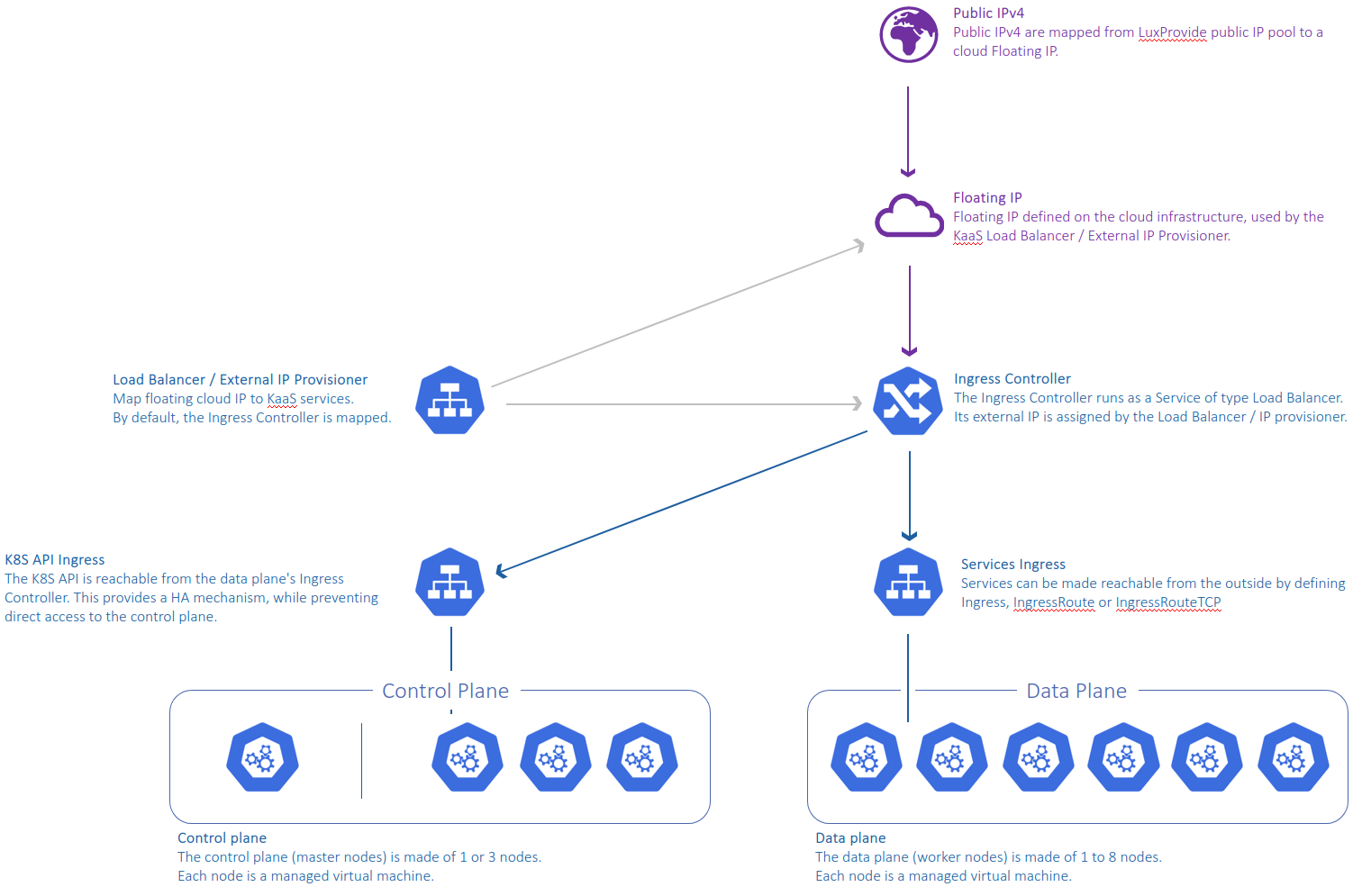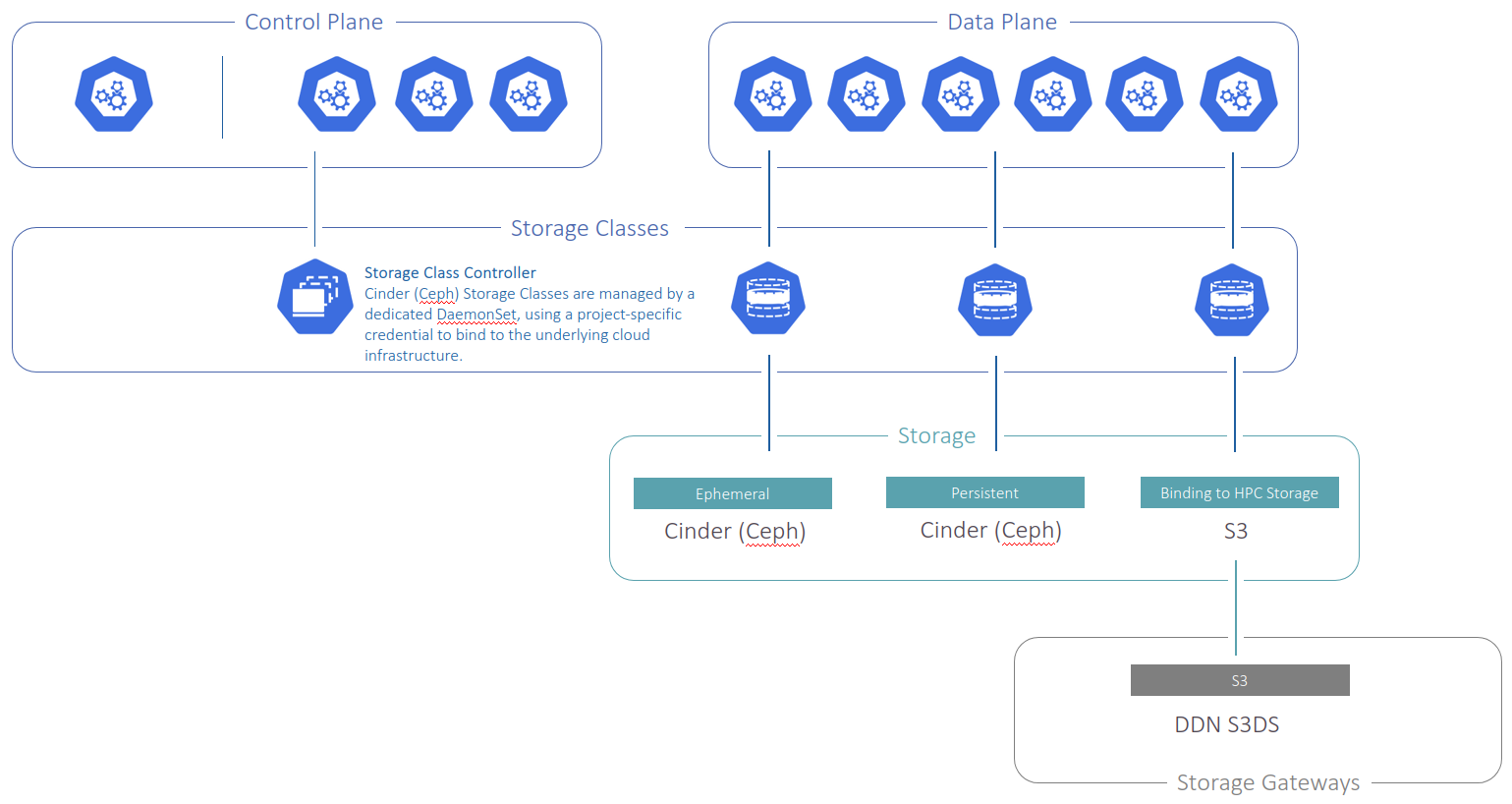Introduction
Overview
LuxProvide offers Kubernetes clusters as a service (KaaS) on demand.
To request a cluster, please contact our sales department at sales@lxp.lu
Gaining access
Generic procedure
This guide present a standard way to operate a Kubernetes cluster.
More advanced readers may adapt those instructions to their needs.
Get the kubeconfig
Once your cluster have been created, you'll receive a link to download a kubeconfig file.
Download this file and place it in your local .kube directory as follow:
| Operating system | File path | Notes |
|---|---|---|
| Linux | ${HOME}/.kube/config |
Create the directory ${HOME}/.kube if it does not exists |
| macOS | ${HOME}/.kube/config |
Create the directory ${HOME}/.kube if it does not exists |
| Windows | %HOMEPATH%\.kube\config |
Create the directory %HOMEPATH%\.kube if it does not exists |
kubeconfig files management
The default kubeconfig file is called config and is placed in .kube/config.
If you manage multiple K8S cluster, you may merge multiple kubeconfig files together
into a single config file:
export KUBECONFIG=""
for kc in $(find ${HOME}/.kube -maxdepth 1 -type f ! -name "config"); do
export KUBECONFIG="${KUBECONFIG}:${kc}"
done
kubectl config view --flatten > ${HOME}/.kube/config
Install a Kubernetes client
Kubernetes clusters are manage via a client to be installed locally.
We recommend to always install kubectl.
kubectl is the default Kubernetes command line tool.
- Install on Linux : Official documentation
- Install on macOS : Official documentation
- Install on Windows: Official documentation
Lens is a graphical desktop application to operate K8S clusters.
- Installation: Official documentation
k9s is a command line interface to operate K8S clusters.
- Installation: Official documentation
Test cluster access
List the cluster nodes:
kubectl get nodes
Get client and server version:
kubectl version --short
Built-in services
Network
Network overview

Public IP
Each cluster has a public IPv4 associated to it. This public IP is used to expose the cluster API and the Ingress Controller.
Ingress Controller
Clusters are provided with a pre-configured Ingress Controller.
The following ports are configured by default:
| Protocol | Port | Service name | Description |
|---|---|---|---|
| TCP | 6443 | kube-api |
Kubernetes API server |
| TCP | 443 | https |
HTTPS gateway |
The following resources kind are available:
| Resource kind name | Description | Documentation |
|---|---|---|
Ingress |
Default K8S Ingress | Ingress documentation |
IngressRoute |
Traefik CRD | Ingress documentation |
Storage
Storage overview

Cluster storage
Clusters are provided with two pre-configured Storage Class.
| Storage Class | Backend |
|---|---|
csi-cinder-sc-delete |
Dedicated cloud project's storage (Cinder / Ceph) |
csi-cinder-sc-retain |
Dedicated cloud project's storage (Cinder / Ceph) |
MeluXina (S3)
MeluXina file system can be access from our S3 gateway.